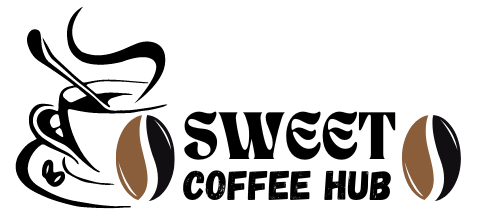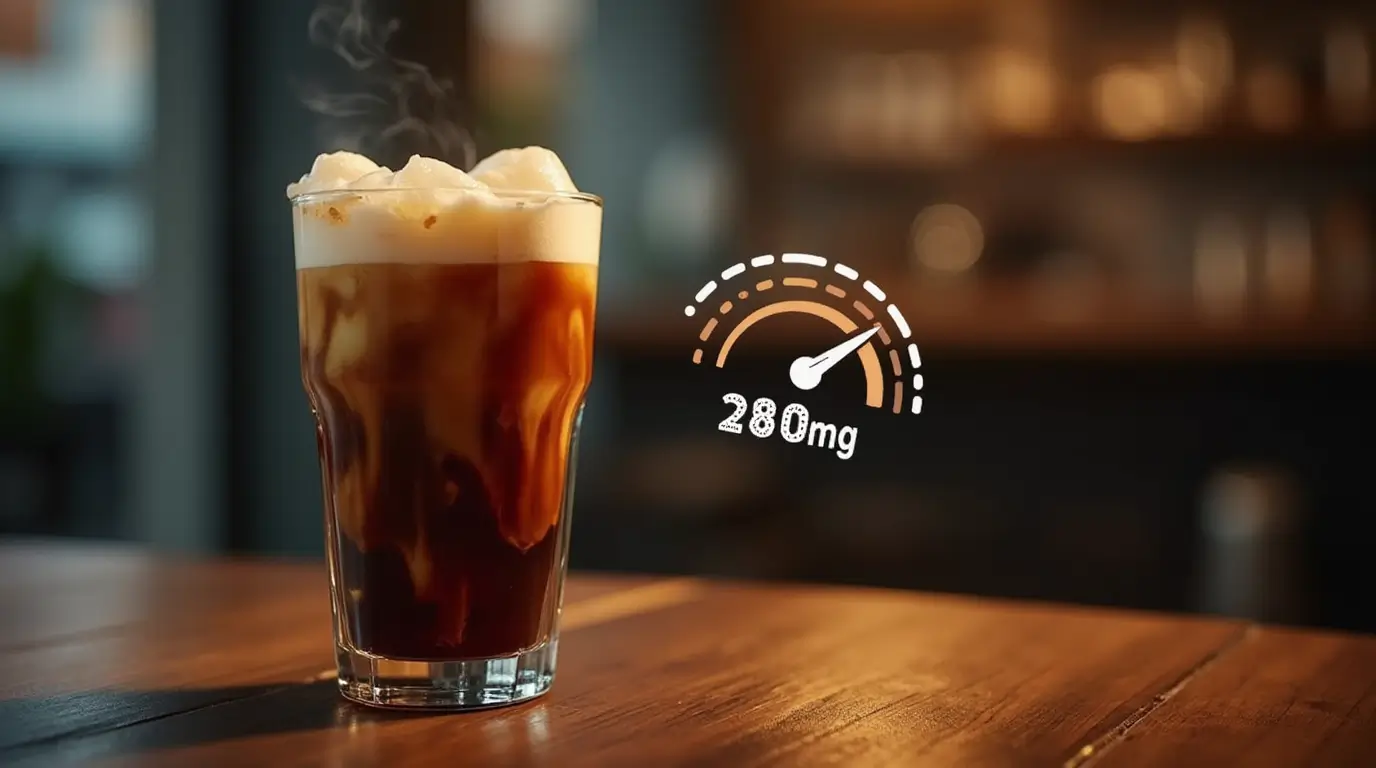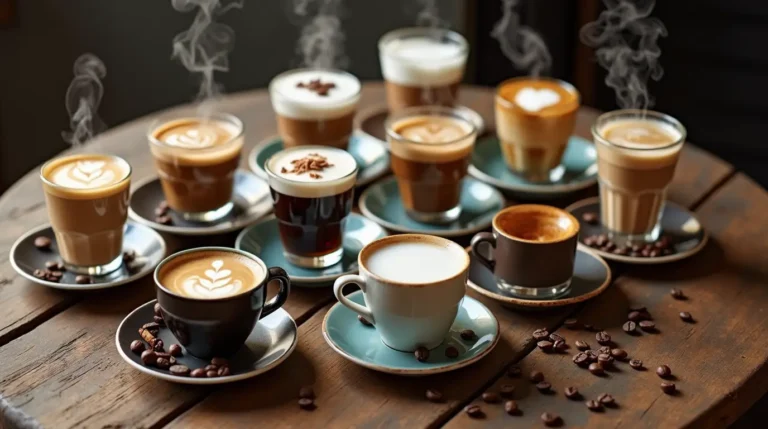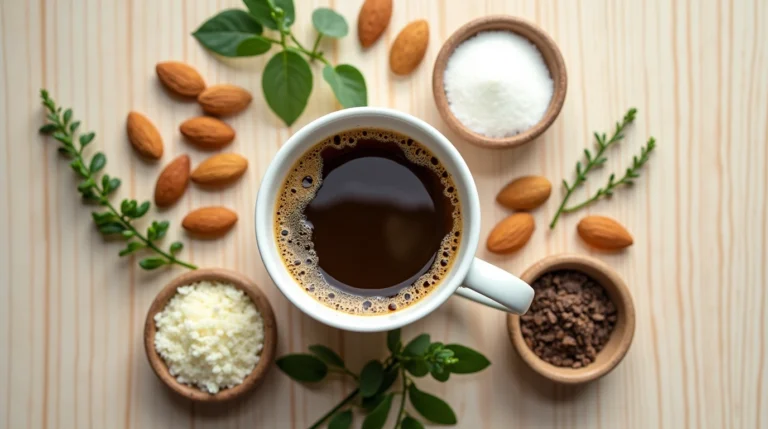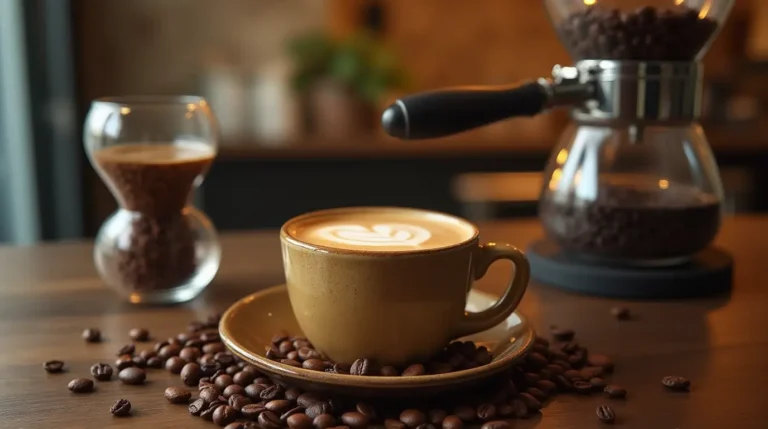how much caffeine in a nitro cold brew
If you’ve ever sipped on a nitro cold brew and felt an intense surge of energy, you’re not imagining things — this smooth, velvety coffee packs a serious punch. But exactly how much caffeine in a nitro cold brew? That’s a question many coffee lovers ask, especially when trying to balance their caffeine intake with health and productivity.
Nitro cold brew has become a popular choice in cafés and coffee chains like Starbucks and Dunkin’, known for its rich flavor, creamy texture, and energizing effect. However, because it’s served cold, without ice, and infused with nitrogen, many people assume it’s just a trendy twist on iced coffee — when in fact, it often contains significantly more caffeine than your average cup.
In this post, we’ll break down the caffeine content in nitro cold brew, compare it to other coffee types, and even show you how to make your own version at home while keeping your caffeine levels in check.
Table of Contents
What Is Nitro Cold Brew and Why It’s So Strong
Nitro cold brew isn’t just a trendy drink—it’s a powerhouse beverage that has taken the coffee world by storm. But what exactly sets it apart from regular coffee, and why is it often much stronger in caffeine? Let’s dive into the science and brewing method behind its bold reputation.
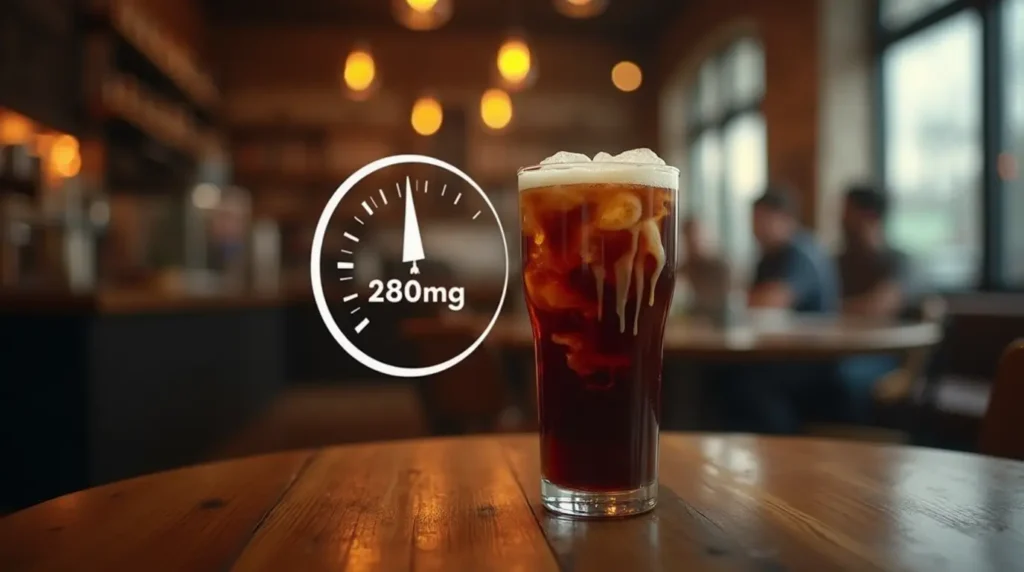
🔹 What Makes Nitro Cold Brew Different from Regular Coffee
The main difference lies in how it’s infused and served. Nitro cold brew starts with regular cold brew coffee, which is already brewed for a long time (usually 12–24 hours) using cold water. But here’s where things get interesting: instead of serving it straight, the coffee is infused with nitrogen gas under high pressure.
This nitrogen infusion gives the coffee a smooth, creamy texture — similar to a Guinness beer — without needing any milk or sweeteners. The result is a naturally sweet, velvety coffee with a thick “head” of foam on top.
Another key distinction is the caffeine concentration. Because nitro cold brew is typically served without ice and made using a higher coffee-to-water ratio, it contains more caffeine per ounce than a regular iced coffee or drip brew.
✅ In short: Nitro cold brew is cold brew coffee enhanced with nitrogen gas, making it smoother, creamier, and significantly stronger in caffeine content.
🔹 Cold Brew vs Nitro Cold Brew: Key Differences
While both cold brew and nitro cold brew start with the same slow-steeped brewing process, they diverge in presentation, mouthfeel, and especially in caffeine levels. Here’s a quick comparison:
| Type | Brewing Time | Caffeine (per 16 oz) | Served With Ice? | Texture |
|---|---|---|---|---|
| Cold Brew | 12–24 hours | ~200 mg | Yes | Smooth |
| Nitro Cold Brew | 12–24 hrs + nitrogen | 280–300 mg | No | Creamy |
- Brewing Process: Both take time, but only nitro cold brew gets the nitrogen treatment.
- Serving Style: Cold brew is poured over ice, which dilutes the caffeine slightly. Nitro cold brew is poured from a tap — no ice, no dilution.
- Caffeine Content: Nitro cold brew contains 30–50% more caffeine, making it one of the strongest coffee beverages on the menu.
🔹 Why Nitro Cold Brew Has More Caffeine
There are a few reasons nitro cold brew delivers such a potent caffeine kick:
- Higher Coffee-to-Water Ratio
– Cold brew is already brewed stronger than drip coffee, and nitro versions often use an even more concentrated blend. - No Dilution from Ice
– Traditional iced coffee and cold brew are served over ice, which melts and dilutes the drink. Nitro cold brew is served cold and straight, keeping its caffeine potency intact. - Smaller Serving, Bigger Impact
– A typical nitro cold brew serving (12–16 oz) has more caffeine per ounce than most other drinks, making it feel stronger and hit faster.
☕ Fun fact: A 16 oz nitro cold brew from Starbucks contains around 280 mg of caffeine, compared to only 150 mg in a 16 oz iced coffee.
How Much Caffeine in a Nitro Cold Brew?
Nitro cold brew is often described as “rocket fuel” for a reason. It’s not just the nitrogen bubbles that give it a kick—this drink usually contains far more caffeine than traditional iced or hot coffee. But how much, exactly? That depends on where you buy it and how it’s brewed.
Let’s take a closer look at how different coffee chains stack up, what affects caffeine levels in nitro brews, and whether it’s safe to enjoy one every day.
🔹 Caffeine Content in Popular Nitro Cold Brews
Caffeine levels in nitro cold brew vary depending on the brand, cup size, and brewing method. Here’s a side-by-side look at how major coffee chains compare:
| Brand | Size | Caffeine (mg) | Notes |
|---|---|---|---|
| Starbucks | 16 oz | 280 mg | One of the strongest commercial options |
| Dunkin’ | 13.7 oz | 260 mg | Available bottled and on-tap |
| Peet’s Coffee | 15 oz | 275 mg | Smooth flavor, slightly less acidic |
- Starbucks Nitro Cold Brew is widely known for its strong caffeine punch, often described as a more intense experience than espresso-based drinks.
- Dunkin’s version is slightly lower in caffeine, but still highly potent — especially convenient in bottled form.
- Peet’s Nitro Cold Brew is often praised for its bold yet balanced taste, with caffeine levels that compete closely with Starbucks.
💡 Tip: Always check your cup size. A larger size doesn’t always mean more caffeine — some brands limit caffeine by serving size to avoid exceeding safe limits.
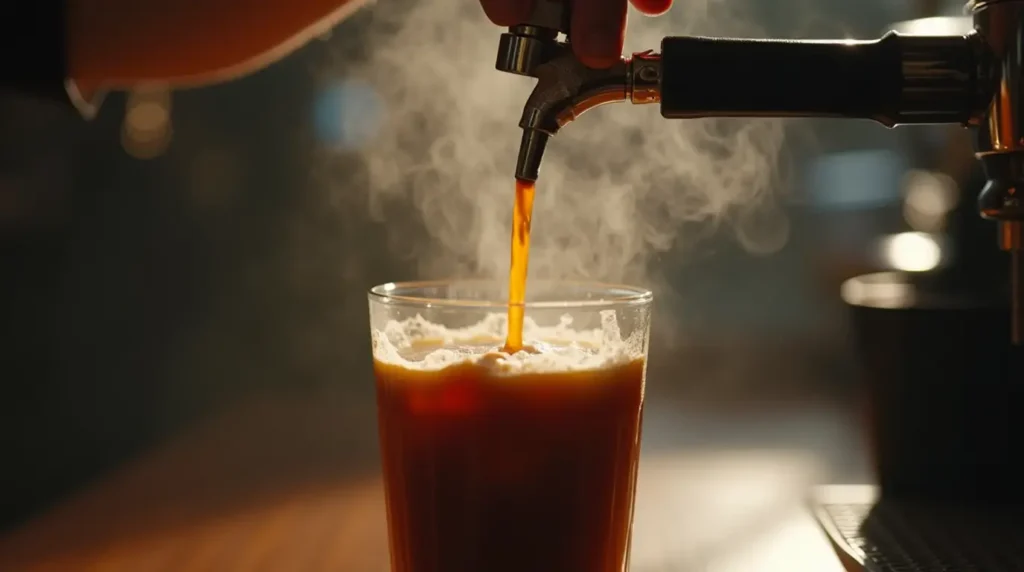
🔹 Factors That Affect Caffeine Levels
Several factors influence the amount of caffeine you get from a nitro cold brew. Even two cups from the same brand can vary slightly based on the following:
1. Bean Type: Arabica vs Robusta
- Arabica beans are used in most specialty coffee shops and contain less caffeine (~1.2%) but offer smoother flavor.
- Robusta beans, less common in nitro brews, contain nearly double the caffeine (~2.2%) and a more bitter taste.
2. Brewing Time
- The longer the coffee steeps, the more caffeine is extracted. Most cold brews steep for 12–24 hours, and nitro brews often use extra-concentrated batches.
- Shorter steep times or dilution steps can reduce the final caffeine content.
3. Brand and Batch Variation
- Each coffee chain has its own ratio of coffee grounds to water, affecting the caffeine.
- Even within the same brand, different locations or seasonal batches may have slight variations in caffeine strength.
🧪 Did you know? Some coffee chains like Starbucks have capped the caffeine in their largest sizes (no Venti Nitro Cold Brew!) to stay within health guidelines.
🔹 Is Nitro Cold Brew Safe to Drink Daily?
With caffeine levels averaging 250–300 mg per serving, many people wonder if nitro cold brew is safe to drink regularly. The answer is: yes, but in moderation.
✅ FDA Guidelines on Caffeine
- The U.S. Food and Drug Administration (FDA) recommends no more than 400 mg of caffeine per day for most healthy adults.
- One nitro cold brew puts you at 70–75% of that limit in a single drink.
💡 Pros and Cons of Drinking Nitro Cold Brew Daily
✔️ Pros:
- High energy boost: Fast mental clarity and alertness
- Less acidic: Gentler on your stomach than hot coffee
- Naturally sweet & creamy: No added sugar or milk required
❌ Cons:
- May cause jitters or anxiety: Especially for sensitive individuals
- Can affect heart rate or blood pressure: If consumed in excess
- Not ideal on an empty stomach: Could lead to nausea or discomfort
⚠️ Pro tip: If you love nitro but want to lower your intake, ask for a smaller size or dilute it with a splash of milk.
DIY Nitro Cold Brew Recipe + Caffeine Control Tips
Making nitro cold brew at home isn’t as complicated as it sounds — and it’s a great way to control both flavor and caffeine content. Whether you’re trying to replicate your favorite Starbucks nitro or simply want a smoother alternative to hot coffee, this section will guide you through the process.
🔹 Easy Homemade Nitro Cold Brew Recipe
Skip the coffee shop lines and make your own nitro cold brew at home with just a few ingredients and tools. Here’s a simple recipe to get you started.
✅ Ingredients Table
| Ingredient | Quantity | Notes |
|---|---|---|
| Coarse ground coffee | 1 cup | Use a dark roast for boldness |
| Cold filtered water | 4 cups | Filtered water improves taste |
| Nitrogen cartridge | 1 | Use food-grade nitrogen only |
| Nitro dispenser (keg or iSi whip) | 1 | Must be compatible with nitrogen |
⚠️ Note: Don’t confuse CO₂ cartridges with nitrogen. Only nitrogen creates that creamy, frothy texture without carbonation.
👨🍳 Step-by-Step Instructions
- Steep the Cold Brew
- Combine the coarse ground coffee and filtered water in a large mason jar or French press.
- Stir gently to mix, then cover and refrigerate for 12–18 hours.
- Strain the Brew
- After steeping, strain the coffee through a fine-mesh sieve, cheesecloth, or paper filter to remove all grounds.
- Infuse with Nitrogen
- Pour the cold brew into your nitrogen dispenser or whipped cream canister.
- Charge it with a nitrogen cartridge, shake well, and let sit for about 30 seconds.
- Pour into a glass at an angle to preserve the foam and enjoy the smooth, cascading pour!
☕ Pro tip: For an ultra-creamy texture, double strain your cold brew and chill it before infusing.
🔹 How to Lower the Caffeine in Your Nitro Brew
While nitro cold brew is deliciously strong, not everyone wants or needs 280+ mg of caffeine in one sitting. Here are some simple ways to adjust the caffeine strength without sacrificing flavor:
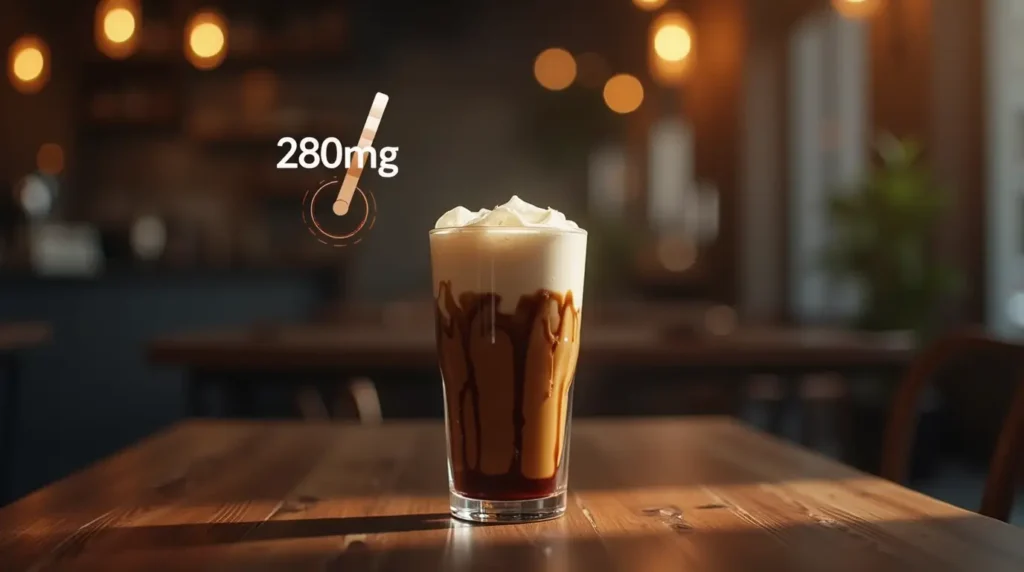
✅ Caffeine Control Tips
- Use fewer coffee grounds
– Try a 1:6 or 1:8 coffee-to-water ratio instead of the standard 1:4 for lower strength. - Shorten the steeping time
– Steeping for 8–10 hours instead of 18 will reduce caffeine extraction. - Dilute before infusing
– Add cold water, milk, or plant-based milk (like oat or almond) to your finished cold brew before charging it with nitrogen.
💡 Even a 25% dilution can reduce your caffeine intake by up to 70 mg per serving.
🔹 Nitro Cold Brew Alternatives with Less Caffeine
If nitro is too strong but you still love the flavor of cold coffee, these lower-caffeine options are worth trying:
☕ Top Alternatives
- Iced Americano
– Made with espresso and water, it’s lighter in caffeine and acidity. Great for a refreshing midday drink. - Regular Cold Brew
– Still smooth and chilled, but with slightly lower caffeine than nitro — especially if served over ice. - Half-Caff Cold Brew
– Blend regular and decaf coffee beans before steeping for a milder caffeine boost.
🌿 Bonus Tip: You can also make a decaf nitro cold brew using decaffeinated beans — same smooth texture, without the buzz.
Conclusion
Nitro cold brew isn’t just a coffee trend — it’s a bold, energizing beverage with a higher caffeine content than most other coffee types. Whether you grab one from Starbucks, Dunkin’, or make it at home, it’s important to know how much caffeine you’re consuming. With up to 280 mg per serving, it offers a powerful pick-me-up but should be enjoyed in moderation — especially if you’re sensitive to caffeine.
If you’re looking to enjoy the creamy smoothness of nitro cold brew without overloading on caffeine, consider tweaking your recipe, shortening the steep time, or diluting it with milk or water.
Now that you know what makes nitro cold brew so strong — and how to control its kick — you can sip smart, stay energized, and make informed choices about your daily coffee habit.
☕ Ready to Brew Your Own?
Try the homemade nitro cold brew recipe in this post and let us know how it turned out! Share your experience or caffeine tips in the comments below. And don’t forget to subscribe for more coffee guides, brewing tips, and wellness-friendly recipes!
